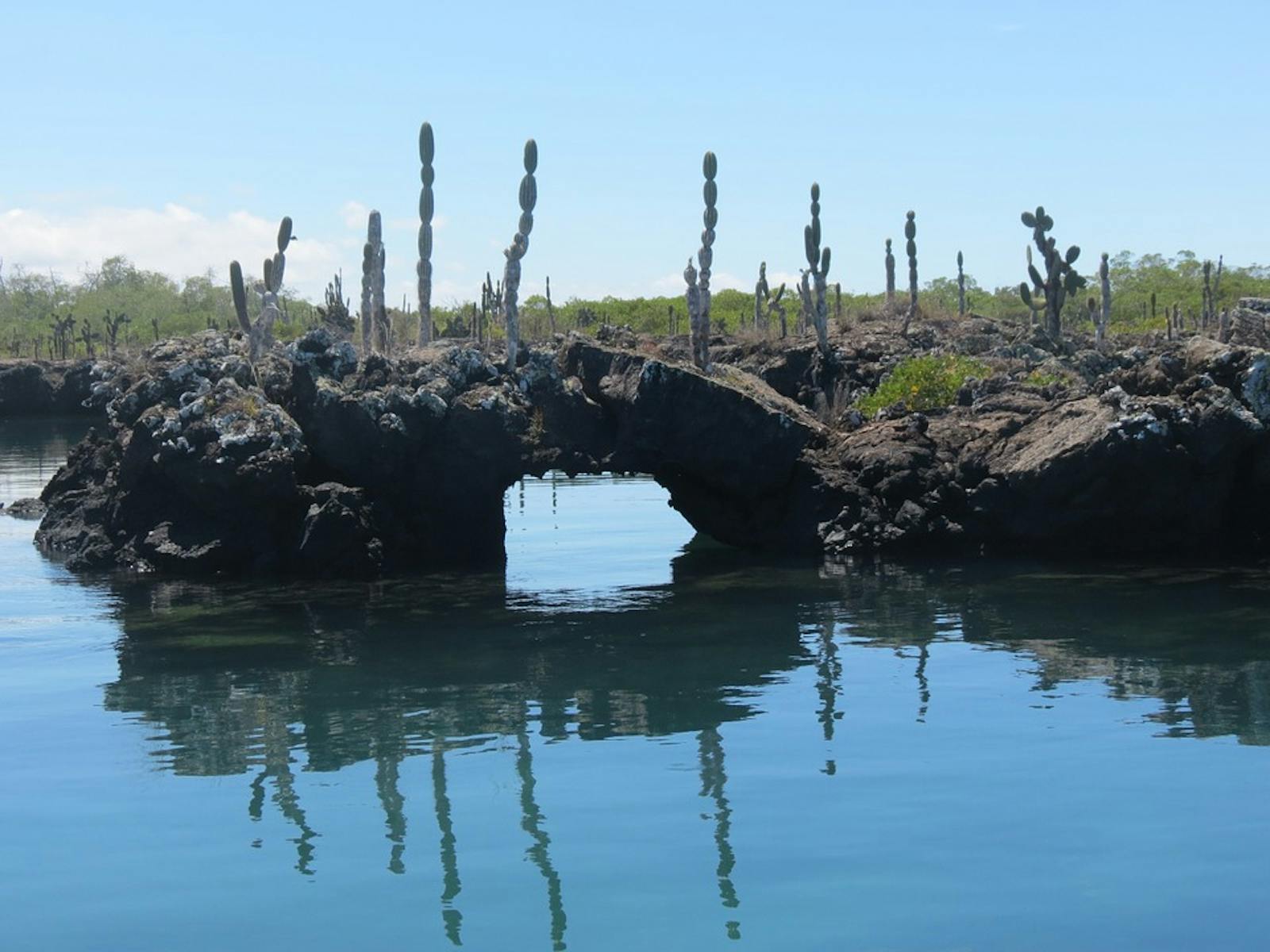Galápagos Islands Xeric Scrub
The ecoregion’s land area is provided in units of 1,000 hectares. The conservation target is the Global Safety Net (GSN1) area for the given ecoregion. The protection level indicates the percentage of the GSN goal that is currently protected on a scale of 0-10. N/A means data is not available at this time.
Bioregion: Galápagos Islands (NT9)
Realm: Southern America
Ecoregion Size (1000 ha):
803
Ecoregion ID:
601
Conservation Target:
100%
Protection Level:
10
States: Ecuador
The Galápagos tortoise is the largest tortoise species on Earth and among the most threatened by extinction. Invasive inedible species have largely replaced the native vegetation upon which these tortoises rely, which, together with habitat conversion, has greatly impacted many of the Galápagos Islands xeric scrub’s endemics.
The Galápagos Islands Xeric Scrub ecoregion encompasses the entire Galápagos archipelago, including about 128 named islands. The Galápagos archipelago holds many uniquely evolved species, making the Galápagos a center of endemism and an inspiration for Charles Darwin’s theory of evolution by natural selection. These species have evolved over time due to isolated island life. Only five of the largest islands are inhabited and they contain the highest levels of endemism. The variation in elevation, size, and distance between islands contributes towards species diversity and endemism.
The Galápagos Islands are part of Ecuador, though they lie in the Pacific Ocean approximately 960 km west of mainland South America. The ecoregion contains 7,882 km2 of land, with 1,336 km of coastline. The climate varies due to the intersection of multiple shifting water currents.
Annual rainfall varies with temperature, which declines 0.9°C for every 100 m in elevation, resulting in an average rainfall of 356 mm at sea level and 1,092 mm at 200 m above sea level. The hot-wet season prevails from about December to May and is characterized by heavier rainfall and warmer temperatures with March reaching as high as 30°C with as much as 80 mm of rainfall. The coldest and driest month is August with temperatures as low as 18°C and as little as 5 mm of rainfall.
.jpg)
The flagship species of the Galápagos Islands Xeric Scrub ecoregion is the Galápagos tortoise. Image credit: Niccie King, Flickr
This ecoregion is home to approximately 500 species of native vascular plants, more than 180 of which are found exclusively in the Galápagos. Lying in the Pacific dry belt, most of the land is covered by vegetation that changes from sea level to high elevations and that is well-adapted to water-limited environments. Areas close to the shore support mangroves and other salt and drought tolerant species. Inland of the shore, the arid zone occupies the most land and diversity, with drought tolerant species of cacti, trees, shrubs, and herbaceous plants.
The humid zone transitions to the arid zone on islands that reach elevations above 300 m above sea level. The highest elevations of this zone hold ferns, sedges, grasses, Sphagnum mosses, and 11 native orchids. Endemic tree ferns grow in collapsed lava tubes, potholes, and other crevices left by tectonic plate activities.
Being young and isolated, the Galápagos ecoregion has lower diversity despite its high endemism. Twenty of its 22 reptile species and five of its 19 resident bird species are found nowhere else in the world. This includes the Galápagos penguin, the only species of penguin found north of the equator. Ninety percent of its population coincides with the Cromwell Current, which cools surface temperatures and increases marine productivity.
Many other endemic birds depend on this current, including the lava gull, one of the rarest gulls in the world. Twenty-four of its 29 shore birds are also endemic, and only six of its mammals are native, including the endemic Galápagos sea lion and fur seal.
The Galápagos ecoregion occurs nearly entirely within Galapagos National Park, designated in 1987. This area was also recognized as a World Heritage Site and a biosphere Reserve in 1978 and 1984, respectively. The current human population is restricted to five islands, which helps limit human impacts on native biodiversity.
Conservationists suggest reducing the size of the “human footprint” on the islands by limiting the number of human residences and other infrastructure to limit habitat degradation. Invasive and introduced species (including goats among many others) predominately threaten this ecoregion and overgrazing by introduced herbivores causes severe erosion. Introduced plants, of which there are hundreds, threaten native vegetation, especially on islands where certain trophic levels are absent, or habitats are disturbed.
The priority conservation actions for the next decade will be to: 1) limit plant introductions by scaling down the ports of entry to one; 2) limit the impact of human footprint on the five inhabited islands; and 3) remove and monitor introduced species.
Citations
1. Burdette, C. P. 2018. Galápagos Islands, off the coast of Ecuador. https://www.worldwildlife.org/ ecoregions/nt1307. Accessed June 14, 2018.
2. Jackson, Michael H. 1999. Galapagos: A Natural History. University of Calgary Press, Alberta, Canada.
3. Bensted-Smith, R. 1998. The war against aliens in Galapagos. World Conservation. 4/97-1/98:40-41



